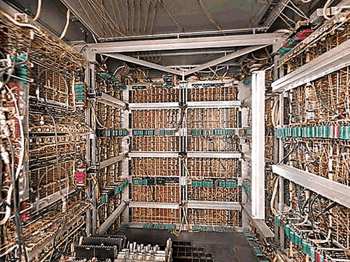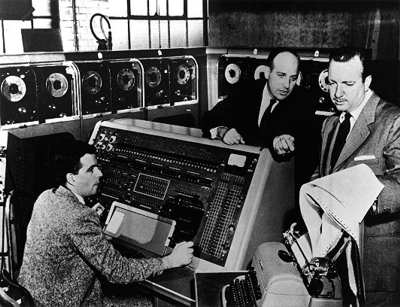| UNIVAC Predicts US Election - On This Day 60 Years Ago |
| Written by Historian | |||
| Sunday, 04 November 2012 | |||
|
On November 4, 1952 UNIVAC became an overnight TV star when it correctly predicted the outcome of the US presidential elections, proving the pundits wrong. The headlines the next day read "Machine Makes Monkey Out of Man". UNIVAC I was the world's first commercially available computer. It was the product of a famous start-up, The Electronic Control Company, the world's first computer company formed in 1946 by J. Presper Eckert and John Mauchly when they left the Moore School part way through the EDVAC project. They failed to find backers since at the time expert opinion estimated that only six computers would be needed throughout the entire USA and Eckert's father put up the $25000 needed for the project. Eckert and Mauchly had more success in finding a buyer. The US Census Bureau was keen to use electronics for they placed the first commercial order for a UNIVersal Automated Computer for $350,270.The machine was delivered, late and over budget, in 1951. The first commercial customer to purchase a UNIVAC was the Prudential Insurance Company. The UNIVAC I was 25 feet by 50 feet in length, contained 5,600 tubes, 18,000 crystal diodes, and 300 relays. It utilized serial circuitry, 2.25 MHz bit rate, and had an internal storage capacity of 1,000 words or 12,000 characters.
Its unique feature was that it separated the complex problems of input and output from the actual computation facility. Mercury delay lines were used to store the computer's program. The program circulated within the lines in the form of acoustical pulses that could be read from the line and written into it. It handled numbers and alphabetic characters equally well. The UNIVAC I was also the first computer to come equipped with a magnetic tape unit and was the first computer to use buffer memory. Each Univac I was equipped with ten magnetic tape drives each and all were compatible, that is, tapes generated on one drive could be used on any drive. In addition, since input and output operations on magnetic tapes were buffered, they could proceed independent of other central processing tasks which greatly increased throughput. These two characteristics made Univac I uniquely suited for large data-processing tasks. UNIVAC's moment of glory came the following year. CBS News borrowed one to make a computational prediction of the 1952 presidential election, a race between Dwight D. Eisenhower and Adlai Stevenson. The computer’s analysis of early returns indicated victory for Eisenhower whereas opinion polls predicted a landslide victory for Stevenson. CBS at first withheld its prediction but Walter Cronkite eventually revealed that UNIVAC's prediction was indeed correct.
J. Presper Eckert and Walter Cronkite discuss the UNIVAC prediction
According to the Computer History Museum: The computer’s TV debut captivated an audience already enthralled by technology and confronting new tools—and new terminology—almost daily. Before long, any computer was called “UNIVAC.” More InformationRelated ArticlesTwitter Can't Predict Elections Either
Comments
or email your comment to: comments@i-programmer.info
To be informed about new articles on I Programmer, install the I Programmer Toolbar, subscribe to the RSS feed, follow us on, Twitter, Facebook, Google+ or Linkedin, or sign up for our weekly newsletter.
|
|||
| Last Updated ( Sunday, 04 November 2012 ) |



